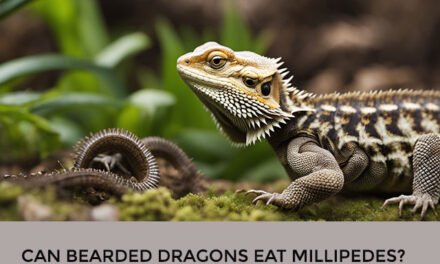Guinea pigs are adorable and social animals that make great pets. As a responsible pet owner, it’s important to provide your guinea pig with a healthy and balanced diet. While hay, fresh vegetables, and fruits are a staple in their diet, it’s natural to wonder if other foods such as maple leaves are safe for them to eat.
Maple leaves are a common sight in many backyards, and it’s normal to assume that they are safe for guinea pigs to consume. However, it’s important to note that not all plants and leaves are safe for these small animals. In this article, we will explore whether guinea pigs can eat maple leaves and if they offer any nutritional benefits. We will also discuss the potential risks associated with feeding maple leaves to guinea pigs.
Nutritional Profile of Maple Leaves
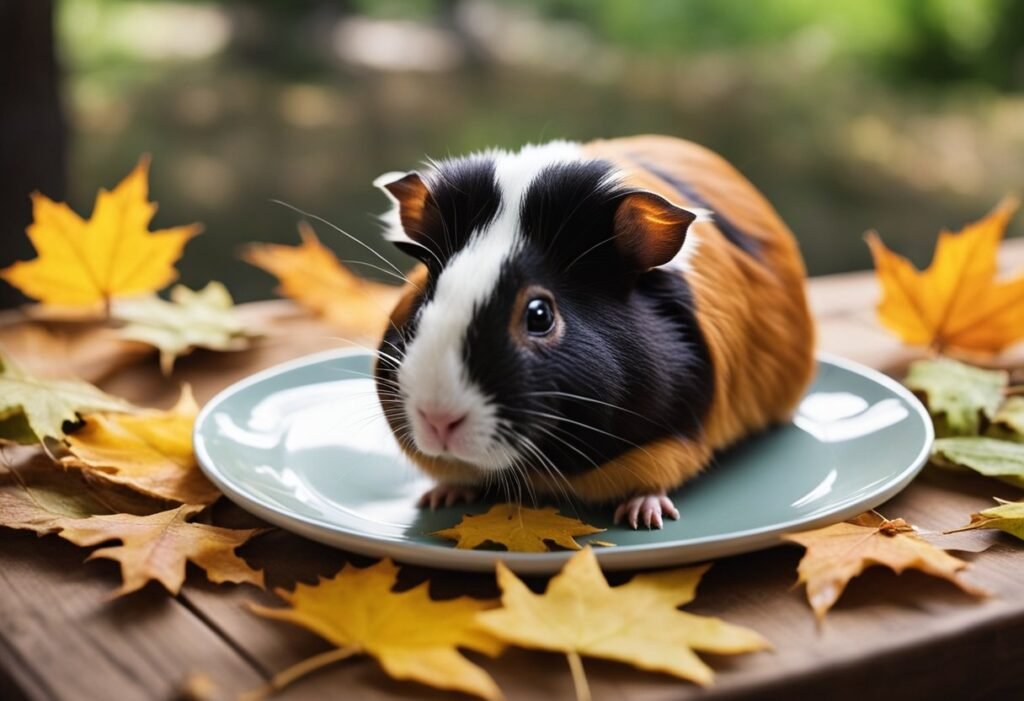
Maple leaves are a popular foliage choice for guinea pigs. They are a good source of fiber, vitamins, and minerals. Here’s a breakdown of the nutritional profile of maple leaves:
Fiber
Maple leaves are high in fiber, which is essential for maintaining good digestive health in guinea pigs. Fiber helps to regulate bowel movements and prevent constipation. A diet rich in fiber also helps to reduce the risk of obesity and other health problems.
Vitamins
Maple leaves are a good source of vitamins A and C. Vitamin A is important for maintaining healthy eyesight, while vitamin C is essential for a healthy immune system. Both vitamins also have antioxidant properties, which help to protect cells from damage caused by free radicals.
Minerals
Maple leaves are rich in several minerals, including calcium, iron, and potassium. Calcium is important for maintaining strong bones and teeth, while iron is essential for healthy blood. Potassium helps to regulate blood pressure and maintain proper fluid balance in the body.
Overall, maple leaves are a nutritious addition to a guinea pig’s diet. However, they should be given in moderation, as too much can cause digestive upset. It’s also important to ensure that the leaves are free from pesticides and other harmful chemicals.
Guinea Pig Dietary Needs
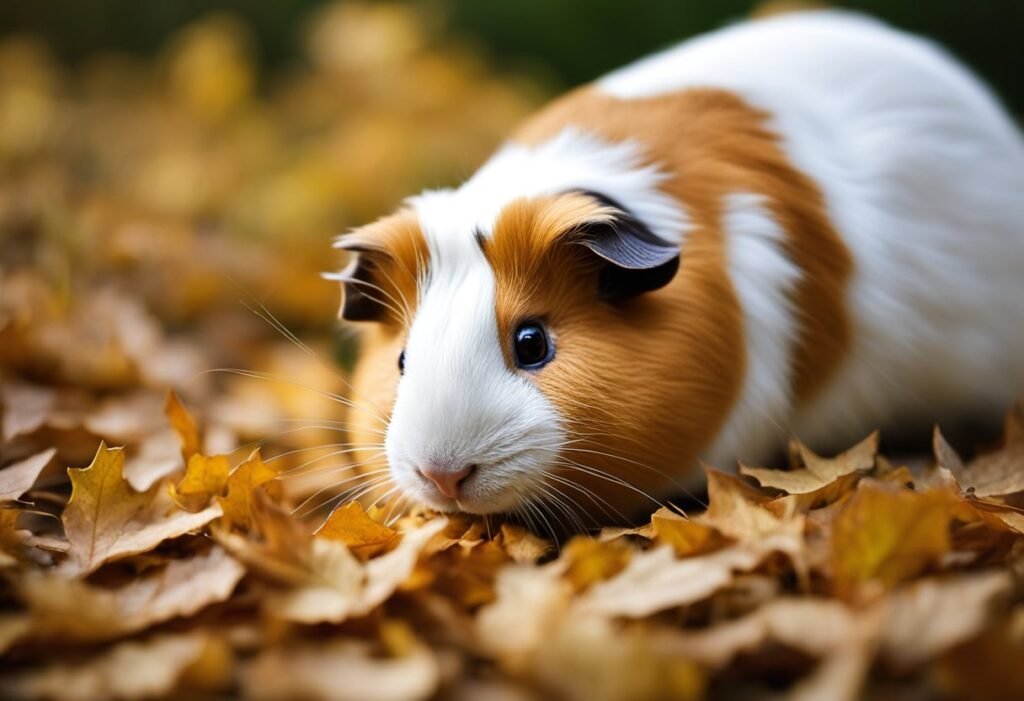
As responsible pet owners, we must ensure that our guinea pigs receive a balanced diet that meets their nutritional requirements. Guinea pigs have specific dietary needs that must be met to keep them healthy and happy.
Vitamin C Requirements
Guinea pigs require a diet high in vitamin C to maintain their health. They are unable to produce this vitamin on their own, so it must be provided through their diet. A lack of vitamin C can cause scurvy, which can lead to joint pain, lethargy, and even death.
To ensure that our guinea pigs receive enough vitamin C, we should provide them with fresh fruits and vegetables daily. Some good sources of vitamin C include bell peppers, kale, and strawberries. It is important to note that vitamin C is sensitive to heat and light, so we should avoid feeding our guinea pigs processed foods or foods that have been stored for a long time.
Fiber and Digestive Health
Guinea pigs require a high-fiber diet to maintain good digestive health. A lack of fiber can lead to digestive problems such as diarrhea and constipation. It can also cause dental issues, as guinea pigs’ teeth continue to grow throughout their lives, and they need to chew on fibrous foods to keep their teeth healthy.
We should provide our guinea pigs with hay as a primary source of fiber. Timothy hay is a good choice, as it is high in fiber and low in calcium. We can also provide our guinea pigs with fresh vegetables such as romaine lettuce and spinach, which are also high in fiber.
In conclusion, we must ensure that our guinea pigs receive a balanced diet that meets their nutritional needs. Providing them with fresh fruits and vegetables high in vitamin C and hay and vegetables high in fiber can help keep them healthy and happy.
Safety Concerns with Maple Leaves
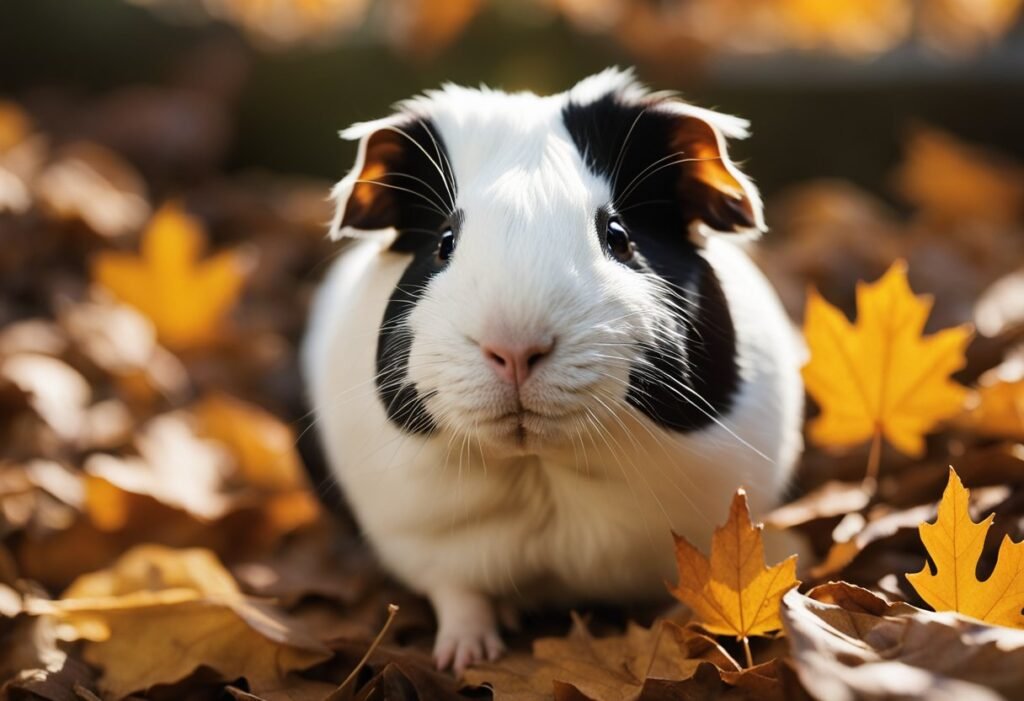
When it comes to feeding guinea pigs, it’s important to be mindful of what they eat. While guinea pigs can eat a variety of fruits and vegetables, not all foods are safe for them. In particular, maple leaves are a food that may pose some risks to guinea pigs.
Toxicity Risks
Maple leaves contain a substance called gallic acid, which can be toxic to guinea pigs in large quantities. Gallic acid can cause digestive upset, including diarrhea and vomiting, and may also damage the liver and kidneys.
While small amounts of gallic acid are unlikely to cause harm, it’s important to limit the amount of maple leaves your guinea pig eats. If you notice any signs of digestive upset or other symptoms after feeding maple leaves, it’s best to avoid giving them to your guinea pig in the future.
Choking Hazards
In addition to the potential toxicity risks, maple leaves may also pose a choking hazard to guinea pigs. The leaves can be tough and fibrous, which can make them difficult for guinea pigs to chew and swallow.
To help prevent choking, it’s important to cut maple leaves into small pieces before feeding them to your guinea pig. You may also want to consider feeding other leafy greens that are softer and easier for your guinea pig to eat, such as lettuce or spinach.
Overall, while maple leaves may be safe for guinea pigs in small amounts, it’s important to be mindful of the potential risks. By limiting the amount of maple leaves your guinea pig eats and taking steps to prevent choking, you can help keep your furry friend healthy and happy.
Benefits of Maple Leaves for Guinea Pigs

As guinea pig owners, we always want to provide our furry friends with the best possible nutrition. While we know that hay, fresh vegetables, and fruits are essential for their health, we often overlook the benefits of feeding them maple leaves.
Maple leaves are a great source of vitamins and minerals that can help maintain the overall health of your guinea pig. Here are some of the benefits of feeding maple leaves to your guinea pig:
1. Rich in Vitamins
Maple leaves are rich in vitamins A and C, which are essential for guinea pigs’ health. Vitamin A helps in maintaining healthy skin, eyes, and fur, while vitamin C helps in preventing scurvy, a common disease in guinea pigs.
2. High in Fiber
Maple leaves are high in fiber, which is essential for maintaining healthy digestion in guinea pigs. Fiber helps in preventing constipation and other digestive problems.
3. Low in Calcium
While calcium is essential for guinea pigs, excess calcium can lead to bladder stones and other health problems. Maple leaves are low in calcium, making them a great addition to your guinea pig’s diet.
4. Tasty and Nutritious
Guinea pigs love the taste of maple leaves, making it a great treat for them. Feeding them maple leaves in moderation can provide them with essential nutrients while also satisfying their taste buds.
In conclusion, feeding maple leaves to your guinea pig in moderation can provide them with essential vitamins and minerals while also adding variety to their diet. However, it is important to note that maple leaves should not be the primary source of nutrition for your guinea pig and should be fed in moderation.
Risks and Precautions
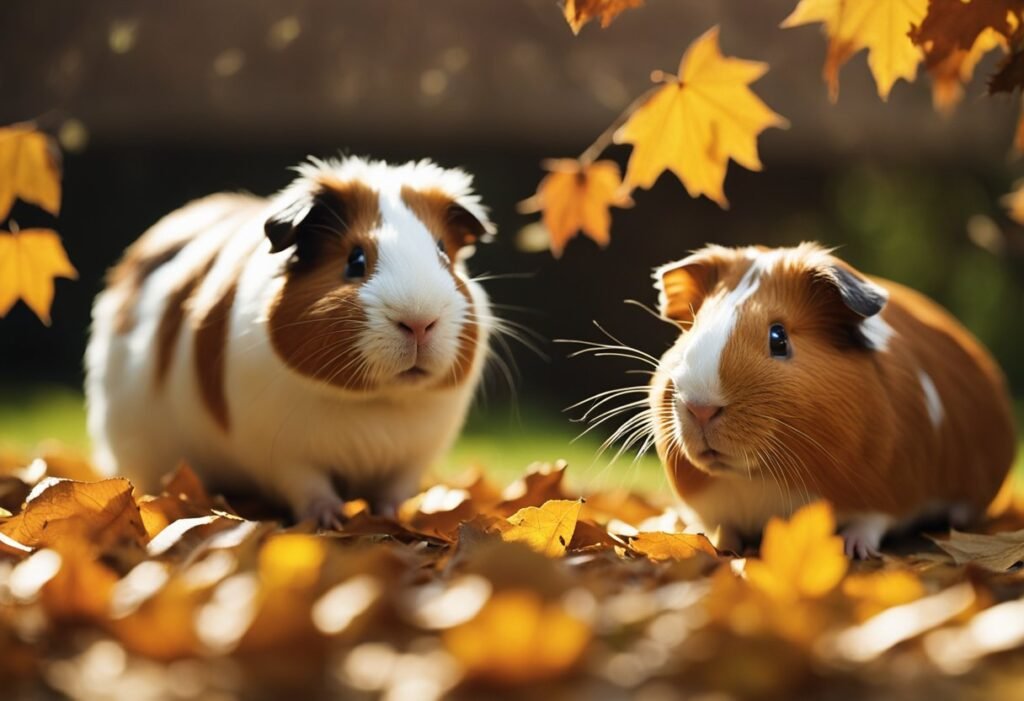
Pesticides and Chemicals
When feeding maple leaves to our guinea pigs, we need to be mindful of any pesticides or chemicals that may have been used on the tree. If the tree has been treated with any chemicals, it is best to avoid feeding the leaves to our pets altogether. In addition, we should avoid picking leaves from areas near roads, parking lots, or other sources of pollution.
Proper Portion Sizes
It is important to remember that maple leaves should only be fed to our guinea pigs in moderation. While they are safe for consumption, an excessive amount can cause digestive problems. We recommend limiting the amount of maple leaves to a few small pieces per week, and always introducing new foods gradually to prevent any adverse reactions.
In summary, feeding maple leaves to our guinea pigs can be a healthy and enjoyable addition to their diet, but it is important to take precautions and practice moderation. By following these guidelines, we can ensure that our furry friends stay happy and healthy.
Alternative Safe Foods for Guinea Pigs
As responsible pet owners, we want to make sure our guinea pigs have a healthy and balanced diet. While it’s important to know what foods to avoid, it’s equally important to know what alternative safe foods we can offer our furry friends.
Here are some safe and nutritious foods that guinea pigs can enjoy:
Vegetables
Vegetables are an important part of a guinea pig’s diet. They provide essential vitamins and minerals that help keep our pets healthy. Some safe vegetables for guinea pigs include:
- Bell peppers
- Carrots
- Cucumbers
- Green beans
- Romaine lettuce
- Spinach
It’s important to introduce new vegetables slowly and in small amounts to avoid upsetting your guinea pig’s digestive system.
Fruits
Fruits are a great source of vitamin C, which is essential for guinea pigs since they cannot produce it themselves. Some safe fruits for guinea pigs include:
- Apples (without seeds)
- Bananas
- Blueberries
- Grapes
- Strawberries
- Watermelon
Fruits should be offered in moderation due to their high sugar content.
Hay
Hay is an important part of a guinea pig’s diet as it provides fiber that helps keep their digestive system healthy. Timothy hay is a popular choice for guinea pigs, but other types of hay such as orchard grass and meadow hay can also be offered.
Pellets
Pellets are a convenient way to provide guinea pigs with the essential nutrients they need. Look for pellets that are specifically made for guinea pigs and avoid those that contain seeds, nuts, or dried fruit.
By offering a variety of safe and nutritious foods, we can ensure our guinea pigs stay healthy and happy.
Preparing Maple Leaves for Consumption
When feeding our guinea pigs, it is important to ensure that the food is safe and free from any harmful substances. Maple leaves are safe for guinea pigs, but they need to be prepared before feeding them to our furry friends.
Firstly, we need to make sure that the maple leaves are fresh and free from any pesticides or chemicals. It is best to pick the leaves directly from a maple tree or purchase them from a trusted source.
Next, we need to wash the leaves thoroughly with water to remove any dirt or debris. We can also soak them in water for a few minutes to ensure that they are clean.
After washing, we need to remove the stems from the leaves as they can be tough and difficult for our guinea pigs to chew. We can also tear the leaves into smaller pieces to make it easier for them to eat.
It is important to note that maple leaves should only be given to guinea pigs in moderation. Too much of any new food can upset their stomachs, so we should introduce maple leaves gradually and monitor their reaction.
By following these simple steps, we can safely prepare maple leaves for our guinea pigs to enjoy as a tasty treat.
Conclusion
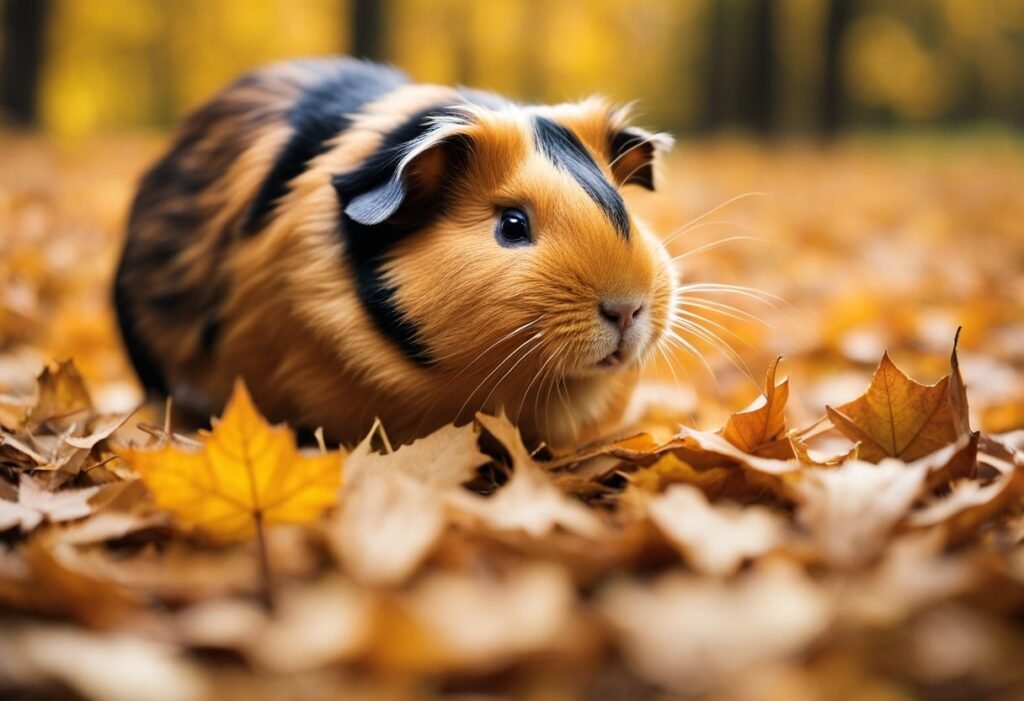
In conclusion, while maple leaves are not toxic to guinea pigs, they should not be a regular part of their diet. Maple leaves are high in calcium and oxalates, which can lead to bladder and kidney stones. Additionally, they are low in nutrients and do not provide any significant health benefits to guinea pigs.
It is important to note that guinea pigs have specific dietary requirements and should primarily consume hay, fresh vegetables, and a small amount of pellets. Any treats or additions to their diet should be given in moderation and only after consulting with a veterinarian.
Overall, while maple leaves may seem like a harmless snack for guinea pigs, it is best to avoid them and stick to a balanced and nutritious diet for optimal health and well-being.
Frequently Asked Questions
Are maple leaves safe for guinea pigs to consume?
Maple leaves are generally safe for guinea pigs to consume in small amounts. However, they are not a significant source of nutrition for guinea pigs and should be considered as a treat rather than a staple food item. It is important to ensure that the maple leaves are free from pesticides and other harmful chemicals before feeding them to your guinea pig.
Which tree leaves are toxic to guinea pigs?
Some tree leaves are toxic to guinea pigs and should be avoided. Examples of toxic tree leaves include avocado, cherry, and oak leaves. These leaves contain harmful compounds that can cause digestive problems, respiratory distress, and other health issues in guinea pigs.
What types of tree branches can guinea pigs safely chew?
Guinea pigs can safely chew on a variety of tree branches, including apple, pear, and willow branches. These branches provide a source of enrichment for guinea pigs and can help to keep their teeth healthy and strong. It is important to ensure that the branches are free from pesticides and other harmful chemicals before giving them to your guinea pig.
Can guinea pigs have leaves from fruit trees like apple or cherry?
Guinea pigs can safely consume leaves from fruit trees like apple and pear trees. However, they should avoid leaves from cherry trees, as they can be toxic to guinea pigs. It is important to ensure that the leaves are free from pesticides and other harmful chemicals before feeding them to your guinea pig.
Are there any common garden weeds that guinea pigs can eat?
Yes, there are several common garden weeds that guinea pigs can safely eat, including dandelion leaves, clover, and plantain. These weeds are a good source of nutrition for guinea pigs and can be given to them in moderation.
What should you avoid feeding your guinea pig from the garden?
You should avoid feeding your guinea pig any plants that are toxic to them, including avocado, cherry, and oak leaves. Additionally, you should avoid giving your guinea pig any plants that have been treated with pesticides or other harmful chemicals. It is important to do your research and ensure that any plants or vegetables you give your guinea pig are safe for them to consume.


